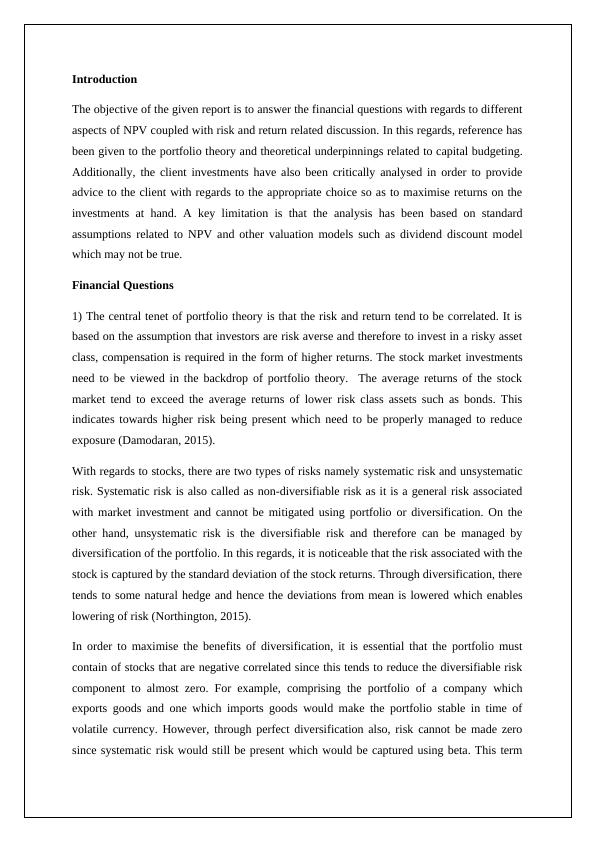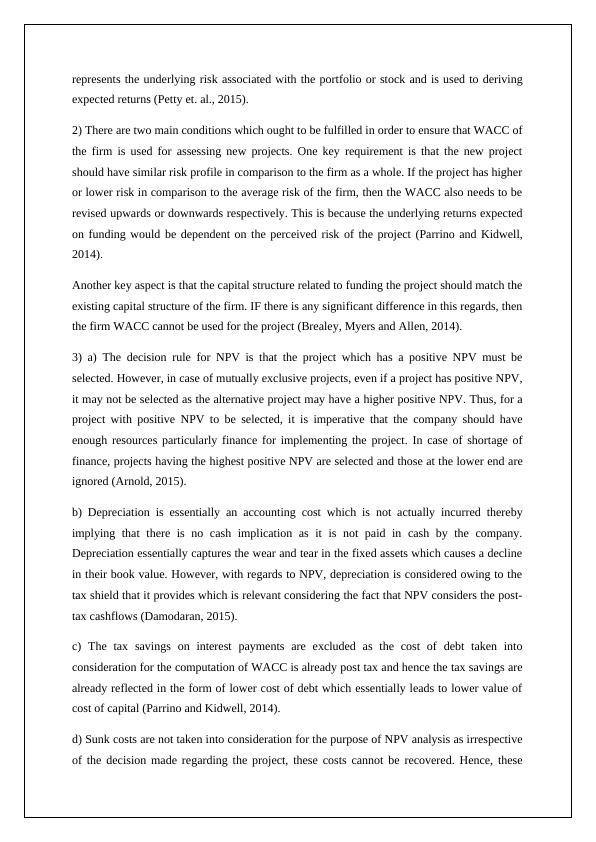Financial Questions and Client Investments in Business Finance
Assignment on Topics 1-7 of Business Finance course at University of South Australia
9 Pages2143 Words458 Views
Added on 2023-06-04
About This Document
This report answers financial questions related to NPV, risk and return, portfolio theory, and capital budgeting. It also provides advice to clients on investments in Lloyds Ltd stock and RunRig Ltd. The report recommends investing in Project 2 for a telecommunication sector start-up company.
Financial Questions and Client Investments in Business Finance
Assignment on Topics 1-7 of Business Finance course at University of South Australia
Added on 2023-06-04
ShareRelated Documents
End of preview
Want to access all the pages? Upload your documents or become a member.
Diversification and Portfolio Risk Reduction in Corporate Finance
|4
|697
|489
Understanding Risk and Diversification in Corporate Finance
|4
|727
|498
Modern Portfolio Theory and Risk Management in Finance
|5
|884
|53
ACC00716 Finance : Assignment
|4
|674
|45
Corporate Finance Assignment PDF
|5
|903
|22
Investment Analysis of ABC Co. and XYZ Co.
|4
|703
|296



